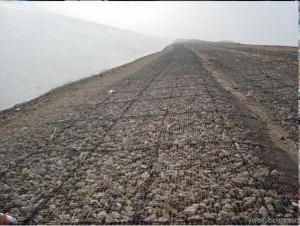Geotextile Class 2: One of the Various Ways for Soil Stabilization and Control of Erosion Civil engineering and construction projects require effective soil stabilization and erosion control. That is why geotextile class 2 comes in, as an answer to such kind of problems. I have personally witnessed the effect of this innovative material on different projects in my advocacy for sustainable construction practices. This article will share with you about Geotextile Class 2; its uses and associated advantages.
What is Geotextile Class 2?
Geotextile class 2 belongs to a particular category of geotextiles which are permeable fabrics made from synthetic polymers such as polypropylene, polyester or polyethylene. These fabrics are used in various civil engineering applications like soil stabilization, erosion control and drainage systems. The term ‘class 2’ indicates that the geotextile possesses moderate strength making it suitable for medium duty applications.
My Personal Experience with Geotextile Class 2
My relationship with geotextile class 2 started while working on a road construction project in a hilly area. The ground was unstable, eroding fast. The conversation between me and other project team members helped us decide to use geotextile class two beneath the pavement as a base layer. The results were unbelievable. By stabilizing the land, the geo-textiles also prevented any erosion hence making sure that the road stands longer.
Applications of Geotextile Class 2
The versatility of geotextiles class II is one of its most fascinating aspects. Some applications include:
Road Construction: As mentioned earlier, it can be great for making base layers more stable especially when subsoil conditions are unfavourable.
Slope Protection: It reinforces slopes against sliding down hence preventing soil erosion thereby useful in landscaping or other civil engineering works.
Drainage Systems: It has a high permeability making it applicable in drainage systems for soil particle filtration and water flow.
Construction of Retaining Walls: This fabric can be used to strengthen retaining walls providing more strength and stability.
Benefits of Using Geotextile Class 2
There are many advantages of using geotextile class 2 in construction, including:
Improved Soil Stability: The cloth has the strength and structure to make the earth stronger hence no sinkholes and stable base for buildings.
Erosion Control: Geotextile class two is designed to act as a barrier which prevents particle loss.
Better Drainage: This fabric is highly porous thus allowing water to pass through it without causing any water logging or other drainage issues.
Cost-Effective: In contrast to alternative strategies for soil stabilization, geotextile class two provides a lower cost solution with long term impacts.
Eco-Friendly: Being made from synthetic polymers, geotextile class two is an environmentally sustainable option for construction activities.
Challenges and Solutions
Even though there are numerous benefits associated with geotextiles class II, they also have some challenges; for instance, wrong installation may result into fabric displacement or damage. Therefore, it is important that installation is done as per the manufacturer’s instructions ensuring proper fixing of the membrane covering the area that needs protection.
Future of Geotextile Class 2
The demand for sustainable and efficient materials such as geotextile class 2 is growing in the construction industry. With the advent of research and developments, it is expected that they will improve their strength, durability, and functionality thus widening their usage and advantages in different construction projects.
In Conclusion
Geotextile class 2 has turned out to be an invaluable asset to the world of civil engineering as well as construction. This makes it a preferred material for diverse types of projects due to its capacity to stabilize soil, regulate erosion and enhance drainage. To me who has witnessed this effect firsthand, I can confirm that geotextile class 2 is not only just any other product but an essential item in making a sustainable infrastructure that will last. Thus when embarking on your next building project remember to include geotextile class 2 in your plans.







